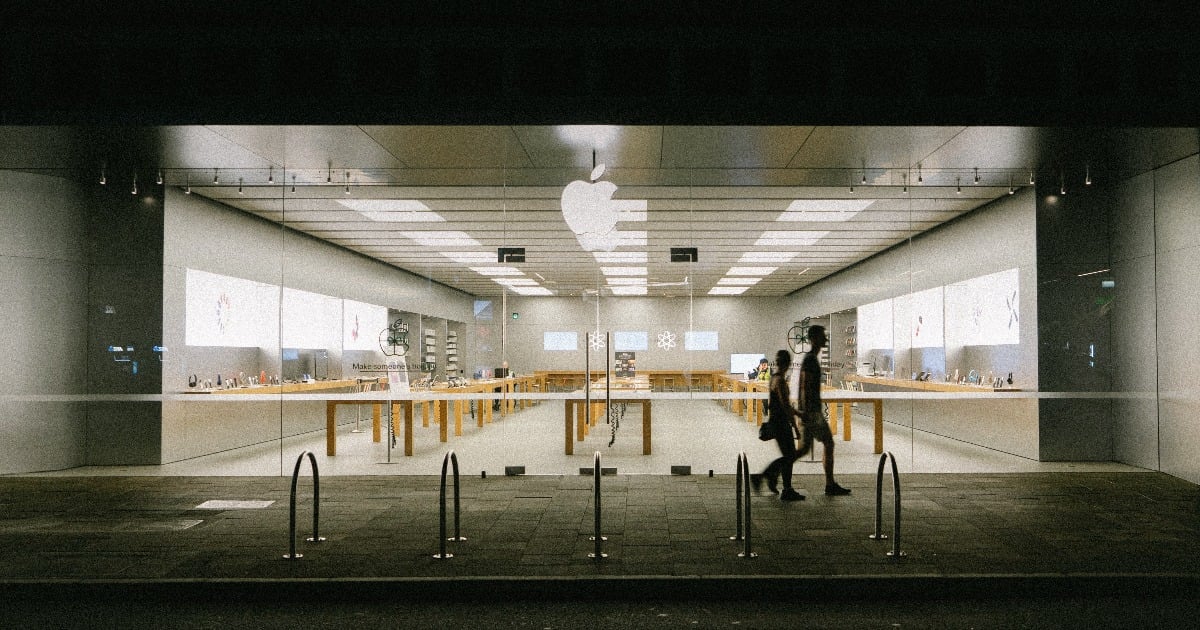The physical space of retail stores is a brand’s biggest asset, a place they can connect with consumers in a way that’s still impossible online. The key? An emotional connection: one that engages the senses and tugs at the heartstrings. A 2016 study conducted by Harvard Business Review and a major apparel retailer concluded that implementing an emotional-connection-based strategy across the customer experience increased the rate of same-store-sales growth by over 50%.
“You want to attract customer attention through emotion, because emotion sells," says Nicole Leinbach Reyhle, founder of retail lifestyle publication Retail Minded.
However, not all brands and retailers are using their physical stores to their full potential: recent research from GPShopper shows more than 33% of shoppers say they "feel nothing" when they walk into a store. That’s not exactly the sentiment brands or consumers themselves are hoping for, and certainly not one that's going to encourage them to come back through the door. To keep consumers engaged, brands and retailers need to find ways to connect with consumers that are exciting, memorable and—most importantly—different than anything they can get online.
1. Sell to All 5 Senses
Creating an exceptional in-store experience starts with all the senses: five opportunities to engage consumers over online shopping’s one.
“Consider all the senses as you build that physical experience—and not just visual because that's the most obvious," Reyhle says. “Consumers instinctively respond to sensory experiences with scent, touch, taste, and sound." Brands and retailers can support this kind of sensory integration by making sure plenty of products are on-hand for consumers to touch, for example.
But depending on things like aesthetic and product type, creating an experience in retail stores that engages all five senses may prove challenging. Rehyle recommends partnering with complementary, but non-competitive, businesses to create a fuller experience while also cross-pollinating customer bases. For example, a women's clothing boutique might invite different businesses, like a bakery or a musician, to come in every first Saturday of the month and add to the store's atmosphere. In addition to an engaging experience, the new in-store feature will give customers something to look forward to.
2. Get Emotional
While visual assets in stores don’t necessarily differentiate in-store from online, ThirdChannel data shows that signage sells. According to a study from a large sporting goods manufacturer, having signage in stores can double sales. Signs should include both pricing information for associated products, as well as marketing information—including product specs and differentiators.
To make marketing the most effective, brands and retailers should look to invoke emotion with customers. According to a survey from FedEx Office, 76% of consumers will visit a store for the first time based on its signs, and almost 68% have made a purchase because of a sign. Create signs with an emotional call to action, such as one about favorite childhood memories near a display of children's toys. With the appropriate signage, brands and retailers can enhance the visitor experience—and drive revenue.
Striking the right message depends on the target customer. Reyhle advises brands and retailers to “find what resonates with your unique audience and use that to create conversation that sparks emotion.” The 2016 HBR study found, for example, that for a major apparel retailer, "key emotional motivators were desire to feel a sense of belonging, be thrilled by the shopping experience, and have a sense of freedom and independence."
3. Be Tech Savvy
A brand or retailer’s online presence can uncover ways to enhance the in-store experience. Retailers can use Google Analytics to better understand more about their audience behavior and adjust in stores accordingly. For example, is there one product page that’s seeing high traffic online? Put the product front-and-center in stores to increase visibility and, likely, make many consumers feel like the store is meeting their needs.
"Understanding your audience online still gives value to your physical store and how you can market to them," Reyhle says. External data sources like Yelp and Google Reviews provide valuable insight in identifying where the store excels and where there's room for improvement when it comes to experience. For example, if a consumer commented on Yelp that a particular associate was helpful in stores, brands and retailers can learn more about what that associate is doing and train new hires accordingly.
Once the consumers do arrive, find ways to engage them on mobile. Data from media analytics company comScore shows the average American adult spends 2 hours and 51 minutes each day on their mobile device. To meet consumers where they are, brands and retailers need to be thinking about in-person and mobile with equal weight. Pushing discounts offers to customers ’phones is just one of many ways brands and retailers can effectively leverage mobile in-stores.
4. Revive In-Store Events
Whether it’s every month or even once a quarter, having a consistent schedule of events can increase consumer excitement and encourage in-store visits. Deciding which stores to prioritize comes down to a brand or retailer’s priorities with the events. To drive sales, events will be most effective if held in stores with high-traffic and high sales volume. To increase market share, prioritize events in high-traffic stores with a lower sales volume.
Reyhle recommends a minimum of one major event per season and two smaller events per month. That could include bringing in someone to teach a regular workshop after hours or a trivia night with prize rewards. A relevant speaker series can also engage customers on topics that matter to them.
Whatever the event is, promote it to create some buzz. “Have a 10-day countdown through your email newsletter and social media, and make sure associates mention it in the store,” Reyhle advises. “Drum up that excitement—customers want to feel enthused about where they spend their money."
The brick-and-mortar stores that survive in a challenging retail environment won't be the ones whose shoppers leave and "feel nothing." By engaging the senses, connecting emotionally, leveraging technology, and offering events worth looking forward to, brands and retailers can make the in-store experience the kind that's not only memorable, but one that sells.



